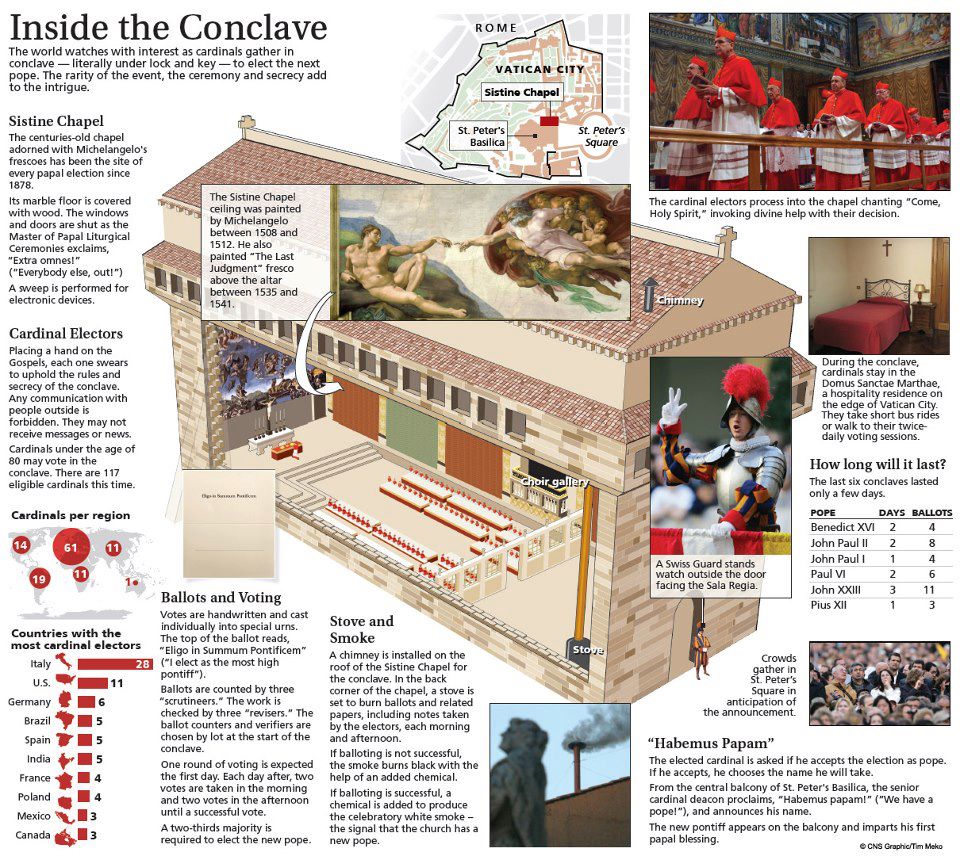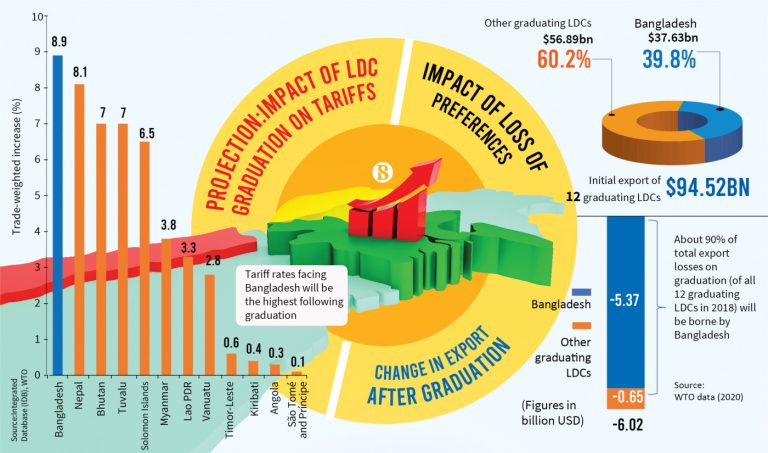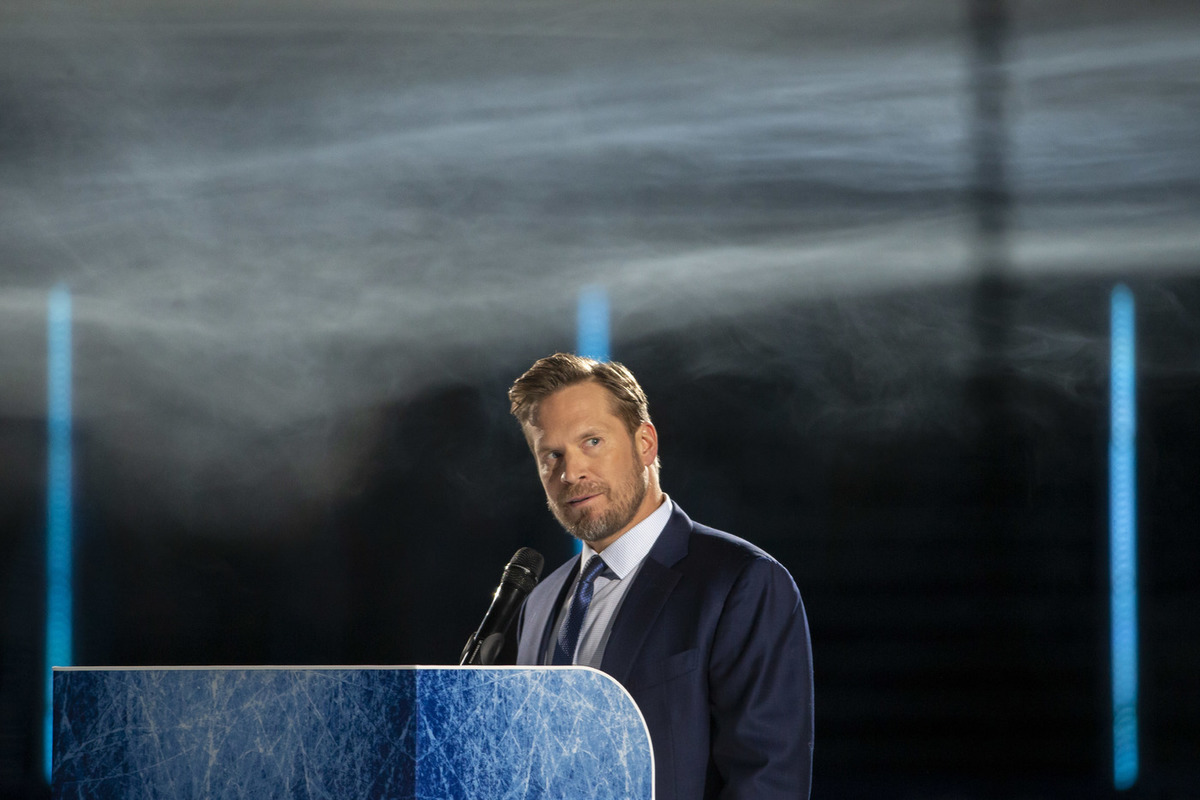Conclave Process: A Step-by-Step Guide To Papal Election

Table of Contents
The Prerequisites: Preparing for the Conclave
The Conclave process doesn't begin spontaneously. Significant preparation is required before the cardinals can even begin the election of a new Pope. This preparatory phase ensures a smooth and orderly transition of leadership within the Church.
The Death or Resignation of the Pope
The official announcement of the Pope's death or resignation marks the beginning of the sede vacante period – the vacancy of the Holy See. During this time, the Cardinal Camerlengo, a high-ranking cardinal, assumes temporary administrative authority.
- The Camerlengo's Responsibilities: The Camerlengo oversees the papal apartments, ensures the security of papal documents and effects, and prepares for the Conclave.
- Sealing the Papal Apartments: The papal apartments are sealed to preserve the integrity and security of papal possessions.
- Preparation for the Conclave: The Camerlengo plays a crucial role in coordinating the logistical arrangements for the upcoming Conclave, ensuring everything is in place for the cardinals' arrival and the election process.
The Conclave's Location and Setup
Traditionally, the Conclave takes place in the Sistine Chapel within the Vatican Palace. This iconic chapel undergoes significant preparation to accommodate the cardinals and the election process.
- Security Measures: Stringent security measures are implemented to ensure the secrecy and integrity of the Conclave. Access is strictly controlled, and surveillance is heightened.
- Living Arrangements for Cardinals: The Sistine Chapel and surrounding areas are adapted to provide living quarters and working spaces for the cardinals during the Conclave.
- Installation of the Voting System: A secure voting system is installed, ensuring the secrecy of each ballot cast by the cardinal electors.
Gathering of the Cardinals
Only eligible cardinals can participate in the Papal Conclave. Their arrival in Rome marks a crucial step in the process.
- Eligibility Criteria: Cardinals under 80 years of age are eligible to participate in the Conclave as electors. Those over 80 may attend but cannot vote.
- The Number of Cardinals: The number of cardinal electors varies depending on the number of cardinals under 80 at the time of the vacancy.
- Travel Arrangements: The Vatican facilitates the travel arrangements for cardinals from around the world, ensuring their timely arrival in Rome.
The Election Process: Steps Within the Conclave
Once the cardinals are assembled, the Conclave process begins, focusing on the selection of the new Pope through a series of structured steps.
The Opening Mass and Oath of Secrecy
The Conclave commences with a solemn Mass, followed by the cardinals taking a crucial oath of secrecy. This oath is of paramount importance to the integrity of the election.
- Importance of Secrecy: Maintaining absolute secrecy during the Conclave is vital to prevent external influence and ensure the freedom of the cardinals in their decision-making process.
- Penalties for Breaking the Oath: Breaching the oath of secrecy is a serious offense with potential consequences, including excommunication.
- Historical Examples of Breaches: Throughout history, there have been few documented instances of breaches of the oath; maintaining confidentiality is paramount.
Scrutinies (Voting Rounds)
The heart of the Conclave lies in the scrutinies – the rounds of voting. Each cardinal casts a secret ballot, ensuring anonymity and preventing undue influence.
- Description of the Ballot: The ballots are specially designed to ensure anonymity and prevent identification of the chosen candidate.
- The Process of Verifying Votes: Scrutiners carefully count and verify the votes, ensuring accuracy and fairness.
- Dealing with Invalid Ballots: Any ballots deemed invalid due to irregularities are set aside and not counted.
Reaching a Two-Thirds Majority
A two-thirds majority of the votes is required to elect a new Pope. If this majority isn't achieved after several rounds of voting, the process continues until a consensus is reached.
- The Impact of Failing to Reach a Majority: Failure to reach a majority can lead to prolonged Conclaves, requiring additional days and potentially impacting the stability of the Church.
- Potential Delays: Extended Conclaves can happen, and the process is designed to withstand these potential delays.
- Historical Examples of Protracted Conclaves: History provides examples of Conclaves lasting several days, even weeks.
Announcing the New Pope: The "Habemus Papam!" Moment
The election of a new Pope is announced with the iconic phrase "Habemus Papam!" (We have a Pope!). This moment is marked by a visible signal, signifying the end of the Conclave.
The Confirmation and Announcement
The moment a two-thirds majority is achieved, the ballots are burned, producing white smoke as a signal to the world.
- The Significance of the White Smoke: The white smoke is a long-standing tradition, signaling the successful election of a new Pope to the eagerly waiting crowds outside.
- The Role of the Master of Ceremonies: The master of ceremonies announces the result officially, proclaiming the name of the newly elected Pope.
- The First Appearance of the New Pope: The newly elected Pope then appears on the balcony of St. Peter's Basilica to address the world.
The Inauguration and Papal Name
The newly elected Pope chooses a papal name, a significant symbolic act, and then undergoes an official inauguration ceremony.
- The Significance of Choosing a Papal Name: Selecting a papal name often reflects the Pope's intentions or pays homage to a significant historical figure.
- Examples of Papal Name Choices and Their Meanings: The choice of papal names often holds historical and theological significance, providing insight into the new Pope's vision and priorities.
- The Inauguration Mass: The inauguration mass is a grand ceremony that officially installs the new Pope as the head of the Catholic Church.
Conclusion
The Conclave process, a blend of ancient tradition and modern security, is a vital event in the Catholic Church. Understanding its intricate steps – from the initial preparations to the momentous announcement of the new Pope – provides insight into the profound significance of this unique election. By learning about the Conclave process, we gain a deeper appreciation for the selection of the spiritual leader for billions worldwide. To delve further into the fascinating history and intricacies of papal elections, continue researching the Conclave process, papal election history, and explore the various resources available online.

Featured Posts
-
 Steelers Draft Pick George Pickens Trade Rumors Explained
May 07, 2025
Steelers Draft Pick George Pickens Trade Rumors Explained
May 07, 2025 -
 Strategies For Rapid Ldc Graduation Achieving Ca Success
May 07, 2025
Strategies For Rapid Ldc Graduation Achieving Ca Success
May 07, 2025 -
 Krikunov Podtverdil Ovechkin V Zale Slavy Iihf
May 07, 2025
Krikunov Podtverdil Ovechkin V Zale Slavy Iihf
May 07, 2025 -
 Building Resilience In Least Developed Countries A Path To Sustainable Development
May 07, 2025
Building Resilience In Least Developed Countries A Path To Sustainable Development
May 07, 2025 -
 Steeler George Pickens Solving The Route Running Issue
May 07, 2025
Steeler George Pickens Solving The Route Running Issue
May 07, 2025
